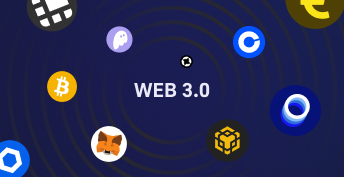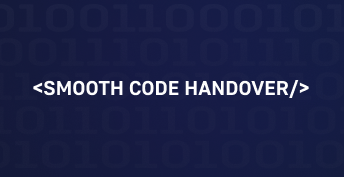What is a Golf Simulator?
Golf Simulators are software designed to simulate the game of golf on a computer or console. They allow players to immerse themselves in the atmosphere of this amazing sport right from home.
Such simulators usually offer a variety of courses to play, from famous golf courses around the world to fictional locations for players’ enjoyment. They try to recreate realistic playing conditions, including weather conditions, course types, and even the physics of the ball and course surface. Golf simulation using specialized equipment such as trackers and sensors creates a more realistic golf experience.
It usually looks like this: a player stands in front of a screen that displays a golf course. They use a real golf club and a special ball with sensors that track movements and strokes.
When the ball is struck, the sensors record data such as the speed of impact, angle, force, and trajectory of the ball. This data is transmitted to a computer, which analyzes it and displays the results on a screen in the form of the ball’s trajectory and its position on the field.
These systems are usually highly accurate and can provide players with feedback on the quality of their strokes, allowing them to improve their technique. Such simulators can be installed in specialized golf halls or even at home, giving players the opportunity to practice and play golf in a realistic environment without leaving the premises.
IT-Dimension’s AQA specialists took part in the development, and specifically in the testing of such a project. And we have insights to share about the intricacies of quality assurance automation for such a setup.
The main challenges of Golf Simulator AQA testing
Several methods can be used to verify that the sensor golf simulation equipment is working correctly:
- Calibration: You should perform a calibration process before you start playing. This will allow the system to correctly determine your shot parameters and provide more accurate tracking of ball movement and flight.
- Testing different strokes: Perform different types of shots, from short to long shots, putts, and full shots. This will help test how the system responds to different playing styles and shot distances.
- Data Comparison: Checking shot data such as ball speed, angle of flight, direction and accuracy. Comparing this data with expected results. For example, a shot with more impact on the ball should produce a higher ball speed.
- Repeat Tests: Repeat the strokes several times to make sure the data tracking is stable and accurate. This will help identify any possible errors or inconsistencies.
- Feedback: If there is any doubt that the equipment is working correctly, you can refer to the manufacturer’s documentation or technical support. They may be able to offer additional advice or checks to ensure the system is working correctly.
Using auto testing frameworks for end-to-end scenarios
If the golf simulator has a web interface for control or customization, you can use Selenium or other E2E frameworks to test that interface:
- Running the application: You can use Selenium to run the golf simulator through a web browser if it provides an interface through a web page.
- Testing the web interface: Selenium allows you to automate user actions on a web page, such as entering data, clicking buttons, navigating, and checking page content. If your golf simulator has a web browser control interface, you can write tests that interact with that interface.
- Data display validation: You can use Selenium to verify that the results of a golf simulator are displayed on a web page if such data is displayed through the web interface.
However, if we are talking about a golf simulator with sensors that run outside of a web browser or use specialized software, Selenium will not be able to interact directly with such a hardware. For such cases, it is better to use specialized tools provided by hardware or software manufacturers.
Backend testing of Golf Simulator software: its peculiarities
To test the backend requests of a golf simulator, there are various tools available to send requests to the server and analyze the responses. Here are some of the options:
- Using API Testing tools: It is possible use API testing tools such as Postman, Insomnia, curl, or HTTP to send requests to the server. These tools allow testers and developers to create, send, and analyze HTTP requests (GET, POST, PUT, DELETE, etc.), as well as examine the server responses.
- Testing Endpoints: Identify the endpoints (URLs, HTTP methods) of the golf simulator. See what requests are required to perform various actions in the simulator, such as starting a game, changing courses, saving results, etc.
- Writing tests using API testing libraries: It is possible to write automated tests to validate the backend functionality of a golf simulator using API testing libraries, such as requests in Python or RestAssured in Java. These libraries allow sending requests to the server and analyzing the responses as part of automated tests.
- Data validation: Make sure that the data returned by the server in response to the requests matches the expected results. For example, after sending a request to start a new game, verify that the server returns the correct data about the start of the game and the ability to make a shot.
- Testing different scenarios: Write tests for different golf simulator usage scenarios to ensure that the backend functions correctly under different game conditions.
Queries to the golf simulator backend will help ensure that it processes data correctly and interacts with the client application or hardware to create a realistic game experience.
Benefits of testing
Testing golf simulator systems offers several crucial benefits to ensure their reliability and performance. The processes detailed in this blog post ensure precise measurements, reliable performance, and seamless user interactions. These tests verify hardware and software integration, ensure accurate data generation, and validate core functionalities like database management, guaranteeing a high standard of functionality and user satisfaction.
Mentioned proactive approach not only enhances the reliability of the simulator but also builds confidence in its functionality among users of this unusual system. Additionally, thorough testing reduces the risk of costly errors or malfunctions during operation, ultimately contributing to a smoother and more successful launch of the product.
At IT-Dimension, we specialize in diverse software testing solutions including manual testing, automation testing, performance testing, and security testing, ensuring robust and reliable applications. Contact us if you need a consultation or AQA setup for your project and we will find a perfect stack just for your unique needs!








